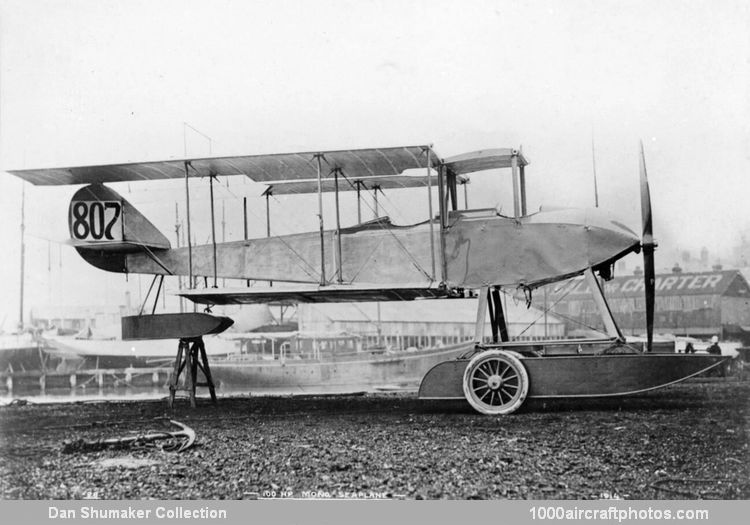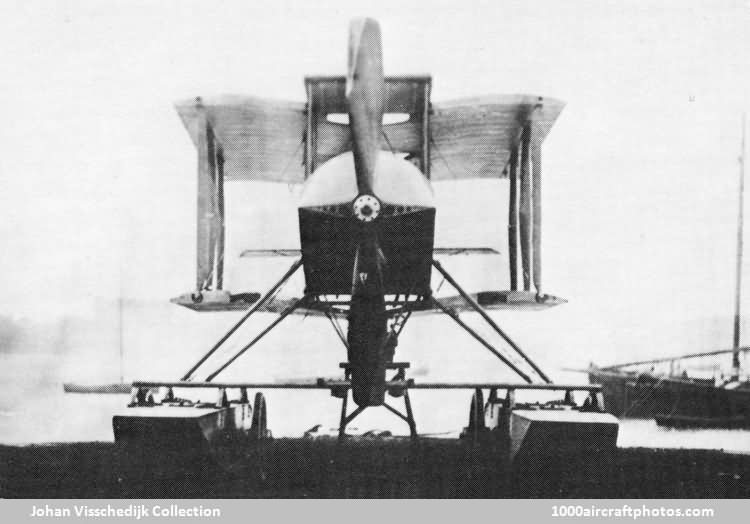12/31/2012. Remarks by Johan Visschedijk: "The first of two batches of Type 807 seaplanes, derived from the 'Circuit' seaplane, was ordered on August 29, 1914; this was for four aircraft and was followed by a further contract on September 29, 1914, for a further eight aircraft. The first batch, serials 807 to 810, was delivered by the end of the year, the others, serials 919 to 926, between December 1914 and March 1915. Power plant was an 100 hp Gnome Monosoupape nine-cylinder air-cooled rotary driving a 9 ft 3 in (2.82 m) diameter two-bladed Chauviere propeller.
The major difference from the 'Spinning Jenny' landplane was the introduction of folding wings to facilitate shipboard stowage. To accomplish this, the lower wing was reduced in span to allow the interplane struts to clear the tail plane. The upper wing was extended and braced by cables and kingposts to provide additional wing area, and additional struts were fitted to support the wing roots adjacent to the fuselage. A reduction in the width of the inner bays resulted. A small cutout to clear the tail float struts was necessary in the trailing edge of the lower wing at the tip, with the wings folded. A scheme to provide more area by tapering the chord of the top wing does not appear to have taken place, although a small extension of the lower wing seems to have been made on later aircraft.
A special long nosepiece was fitted to the engine and the top cowling extended forwards to the front bearing. Aircraft taken to East Africa and the Mediterranean had their front cowlings cut away to improve cooling, exposing the front bearing supports. The twin main pontoon floats with crossbars, were mounted on inverted W-struts and were sprung, fore and aft, by leaf springs. The tail float was hung well below the rear fuselage and was fitted with a water rudder.
The overseas operations were generally unsatisfactory in hot conditions and the machines, being lightly built, were easily damaged. With the exception of serial 920, which continued to operate as a landplane in Mesopotamia until the end of 1916, all the others were discarded by the middle of 1915.
The particular aircraft which led to the official styling 'Admiralty Type 807' for the class more generally known as 'Sopwith Folder' is shown above in a position and condition which afford their own explanations. Note the top-wing overhang, float arrangement, tail design and cockpit spacing.

